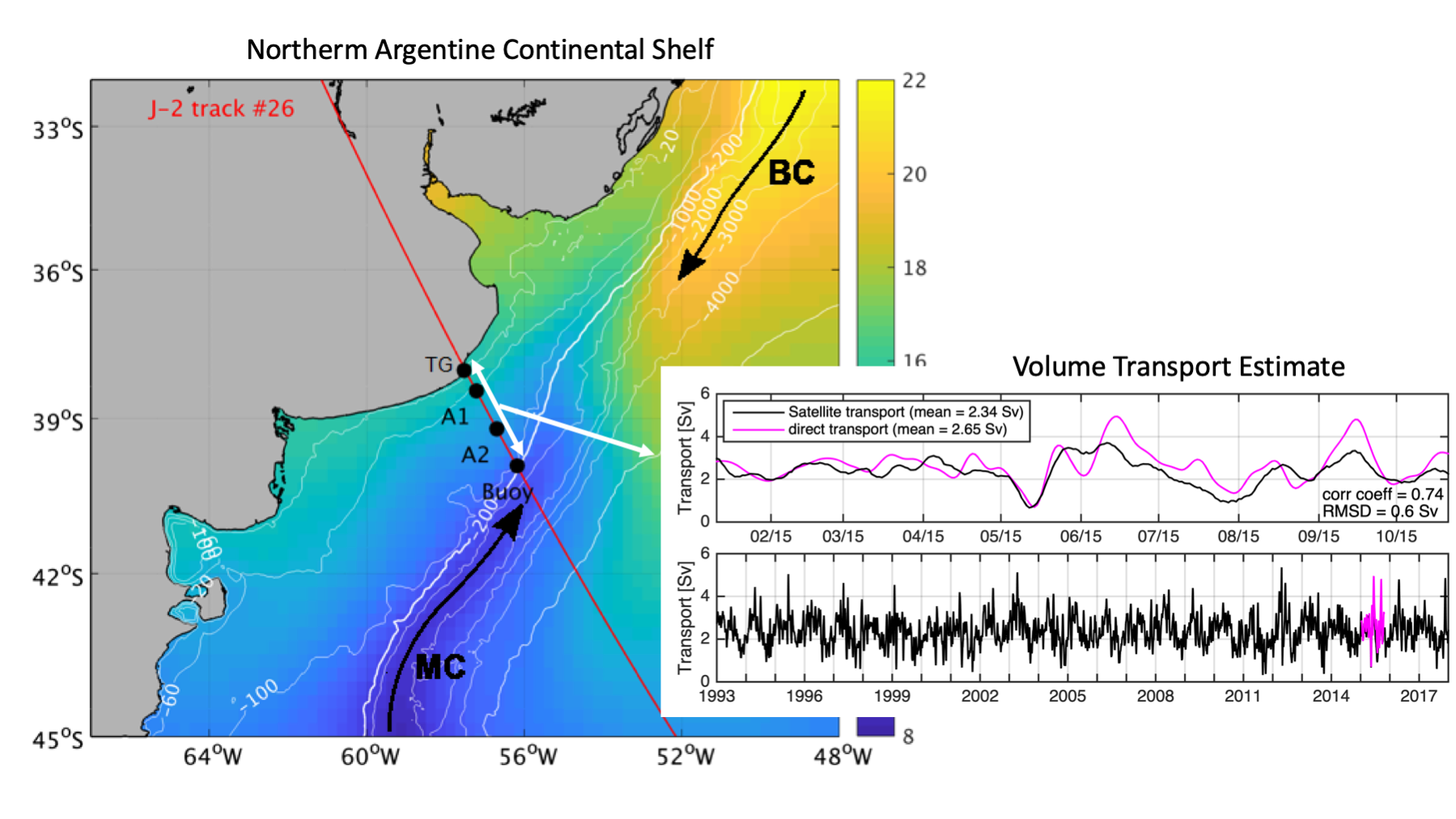Abstract's details
Analysis of a 25-year long volume transport time series derived from satellite altimetry data and in situ measurements
Event: 2020 Ocean Surface Topography Science Team Meeting (virtual)
Session: Coastal Altimetry
Presentation type: Forum only
A 25-year long time series of along-shore volume transport was computed in the Argentine continental shelf at ~39°S using velocities derived from satellite altimetry data. The section considered for the estimation extends from the coast to the 200 m isobath under track #26 of Jason-2 satellite mission. A careful validation of the satellite altimetry data with 11 months of direct current observations collected in the framework of the CNES-EUMTSAT CASSIS project is presented. We evaluated along-track and multi-satellite gridded products. The best comparison was achieved by the gridded product, probably thanks to the fact that provides a higher temporal resolution in comparison to the along-track data. The volume transport derived from the gridded product is significantly correlated with the in situ transport (r = 0.74) at time scales longer than 20 days. The analysis of the extended satellite transport shows that the mean flow is towards the Northeast (2.28 Sv) and that the variability is dominated by the annual signal, with a maximum during the austral autumn and a minimum during the austral spring. The interannual component of the transport is significantly correlated (r = -0.5) with the Southern Annular Mode (SAM). SAM induces along-shore wind stress anomalies over the region that modulate the cross-shore pressure gradient and thus affect the interannual component of the transport. Our results also suggest that the cross-shore pressure gradient generated by the variability of the Malvinas Current affects the along-shore transport only in the outer 30 km of the continental shelf. Finally, we observed that the relative minimums detected in the satellite transport are indicators of reversal events (transport towards the Southwest) that might have a strong influence on the larvae and early life stages of the species that spawn in this region. This work shows the importance of counting with altimetric products with high temporal resolution especially in continental shelfs whose dynamics are controlled by high-frequency atmospheric forcing.


Contribution: OSTST2020_Lago.pdf (pdf, 1039 ko)
Back to the list of abstract